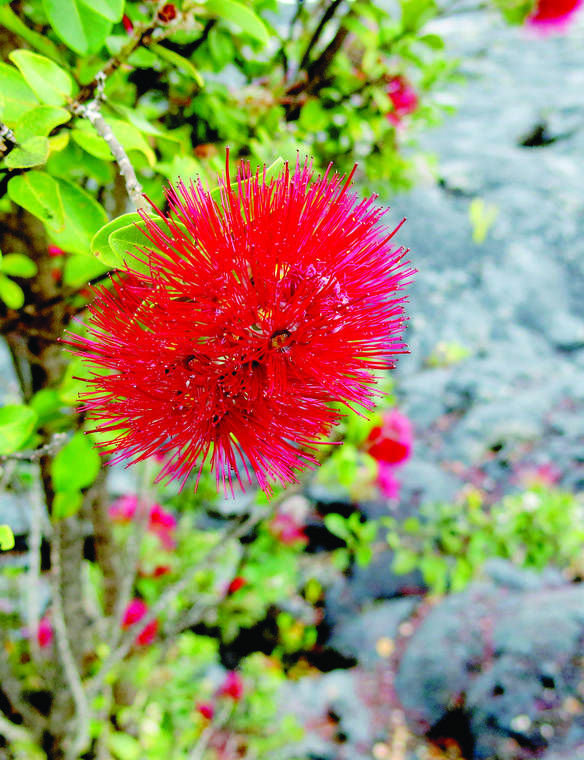HONOLULU — The state has added one more infected tree to the list of ‘ohi‘a impacted by Rapid ‘Ohi‘a Death on O‘ahu.
That brings the total up to five trees on O’ahu. The disease has also been identified in trees on Kaua‘i, Maui and on Hawai‘i Island, where it was first detected.
Rapid ‘Ohi‘a Death is caused by one of two newly fungal pathogens and slowly kills ‘ohi‘a, a species of tree that is endemic to Hawaii and makes up about 80% of the state’s forests.
It was first detected on Hawaii Island in 2014 and for the last six years, it has been slowly spreading while a partnership of many state, local and federal entities work together to identify the cause, identify how it spreads and find a treatment.
On Hawai‘i Island, it has killed or injured hundreds of thousands of trees. Regular aerial and ground surveys of ‘ohi‘a-dominated forests continue.
Staff members with the state Department of Land and Natural Resources detected the single tree last week with the less virulent of the two strains of fungus.
The infected tree was spotted by staff from the O‘ahu branch of the DLNR Division of Forestry and Wildlife and due to its proximity to the popular Poamoho trail, it was decided to close the trail until the tree can be removed. That is expected to happen sometime this week, and crews will also conduct sampling of surrounding trees to ensure the fungus has not spread.
DOFAW State Protection Forester Rob Hauff reminds people, entering forests anywhere in the state to practice clean hiking habits as the aggressive species, C. lukuohia, has not been detected on Oahu. Some trailheads have boot disinfecting stations, but Hauff encourages everyone to clean their boots, equipment, and vehicles, no matter the location and every time you enter the forest. More information on what you need to know is available in the link below.
“We are taking a cautious and conservative approach toward removing the latest infected tree because Poamoho is a critical watershed and home to numerous endangered or threatened plants and animals,” Hauff said. “We want to be sure someone doesn’t inadvertently spread Rapid ‘Ohi‘a Death beyond this single ohi‘a.”
Foresters are appreciative of continued information from people who are reporting possible infections.
The public can help with stopping the spread of ROD and with detecting the disease. Boot washing stations are already at many of the trailheads on Kaua‘i, and provide the chance for hikers, hunters, and forest users to clean gear and boots before moving to different areas in the forest. That helps stop the spread.
The College of Tropical Agriculture and Human Resources has training available on boot and gear washing, but also on how to sample for ROD infection.






